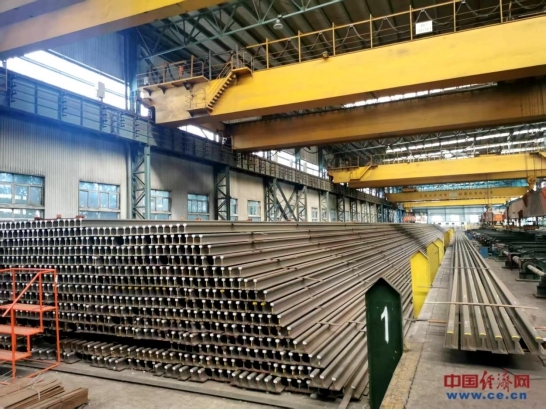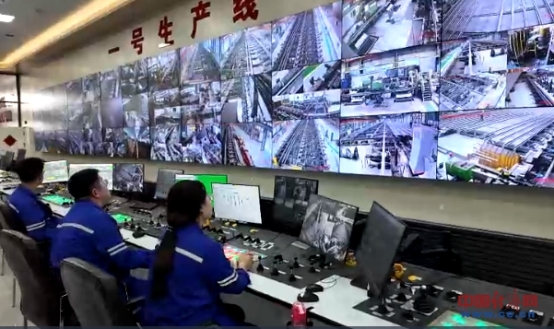By Wang Kai
BAOTOU, Jul 24 (China Economic Net) - Few now question China’s mastery of high-speed rail technology, yet passengers aboard rarely think about what lies beneath them as they zip across deserts, plains, and mountains at 350km per hour. The cabins are quiet, the ride smooth, the countryside a blur. Under each fleeting train is a feat of industrial engineering that might be less glamorous than the trains themselves-but arguably just as revolutionary: the rail.
In Baotou, a steel city perched on the edge of what used to be Gobi deserts, engineers are reinventing the most mundane piece of infrastructure in the railway business. Here, China produces the flattest steel rails on Earth-so precise that their surface variation is less than half a millimetre, the thickness of two sheets of A4 paper.

Rail and Steam Factory of Baotou Steel [Photo/China Economic Net]
Every three minutes, a red-hot rail beam, 100 metres long, emerges from the rolling mill. It is cooled, straightened, trimmed and hoisted with the click of a few buttons.
“A core part of this is dynamic rail measurement using Doppler spectroscopy,” explained Peng Bo, chief electrical technician at Baotou Steel. “After cooling, a pre-bending step is needed to reduce welding stress and equipment load, which makes it difficult to keep lengths consistent. In the past, this required skilled hands and sharp eyes. Now, we let the machines do it-with millimetre accuracy.”
Inside the facility’s smart control centre, a 24-metre ultra-wide screen displays real-time data tracking every step of the production line. Artificial intelligence parses the figures, adjusts cooling strategies, and allocates tasks, turning what was once manual craftsmanship into a closed-loop system of digital automation.

The world’s first smart control rail production center in cooling area in Baotou, China. [Photo/China Economic Net]
“This is the first of its kind in the world,” Peng said. The cooling-area smart production line-normally a challenge due to temperature sensitivity-now runs with 98% automation. Since its implementation, energy consumption has fallen by 19%, while labour costs have dropped by 40%.
Quality standards have risen just as sharply. Rails from Baotou Steel now surpass international benchmarks by some 30%. They are laid beneath the world’s fastest railway (Beijing–Shanghai), its longest (Beijing–Guangzhou), its highest (Qinghai–Tibet), and its hottest (the desert-circling Taklimakan line). They also stretch far beyond China’s borders: the China–Laos railway, the East African corridor extension, and the Hungary–Serbia line all run on Baotou steel.
Materials science plays a part, too. Rare-earth elements-abundant in Inner Mongolia-are infused into the steel to boost toughness, wear resistance, and lifespan. “Through advanced quenching, we’ve extended the service life of rails from the global average of 30 years to 70 years,” said Peng. “These are generational rails.”
Sustainability has also joined the agenda for long. Baotou recently launched the world’s first industrial-scale project using steel slag to capture carbon dioxide. By combining solid waste with CO₂, the plant produces high-purity calcium carbonate fillers and carbon-fixing micropowders.
Running at full capacity, the facility processes 100,000 tonnes of slag each year, generating up to 60,000 tonnes of calcium carbonate and 70,000 tonnes of micropowder-while capturing roughly 30,000 tonnes of CO₂ annually.
“In the future, we aspire to raise the levels of precision and automation even further,” Peng said.
(Editor: fubo )


